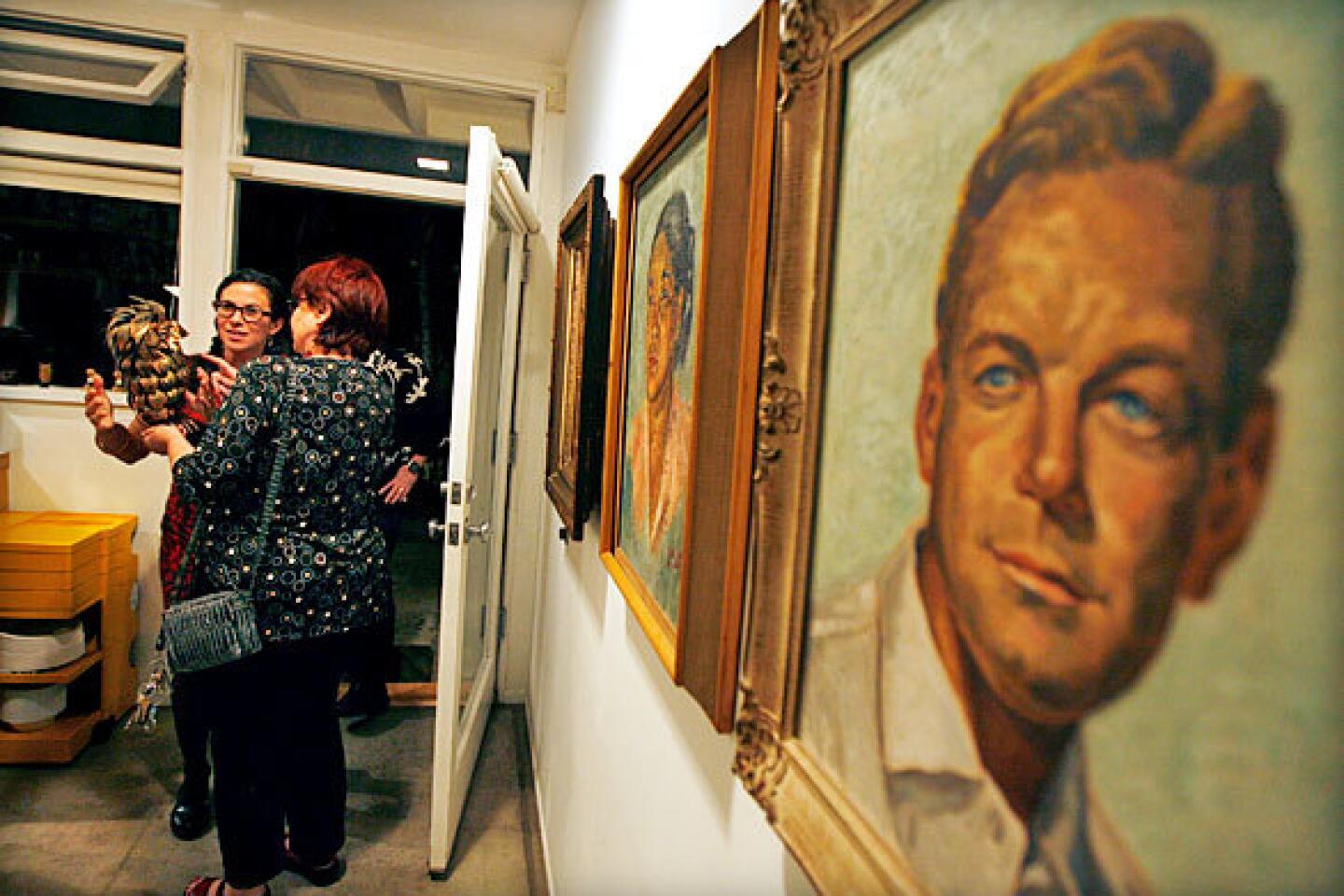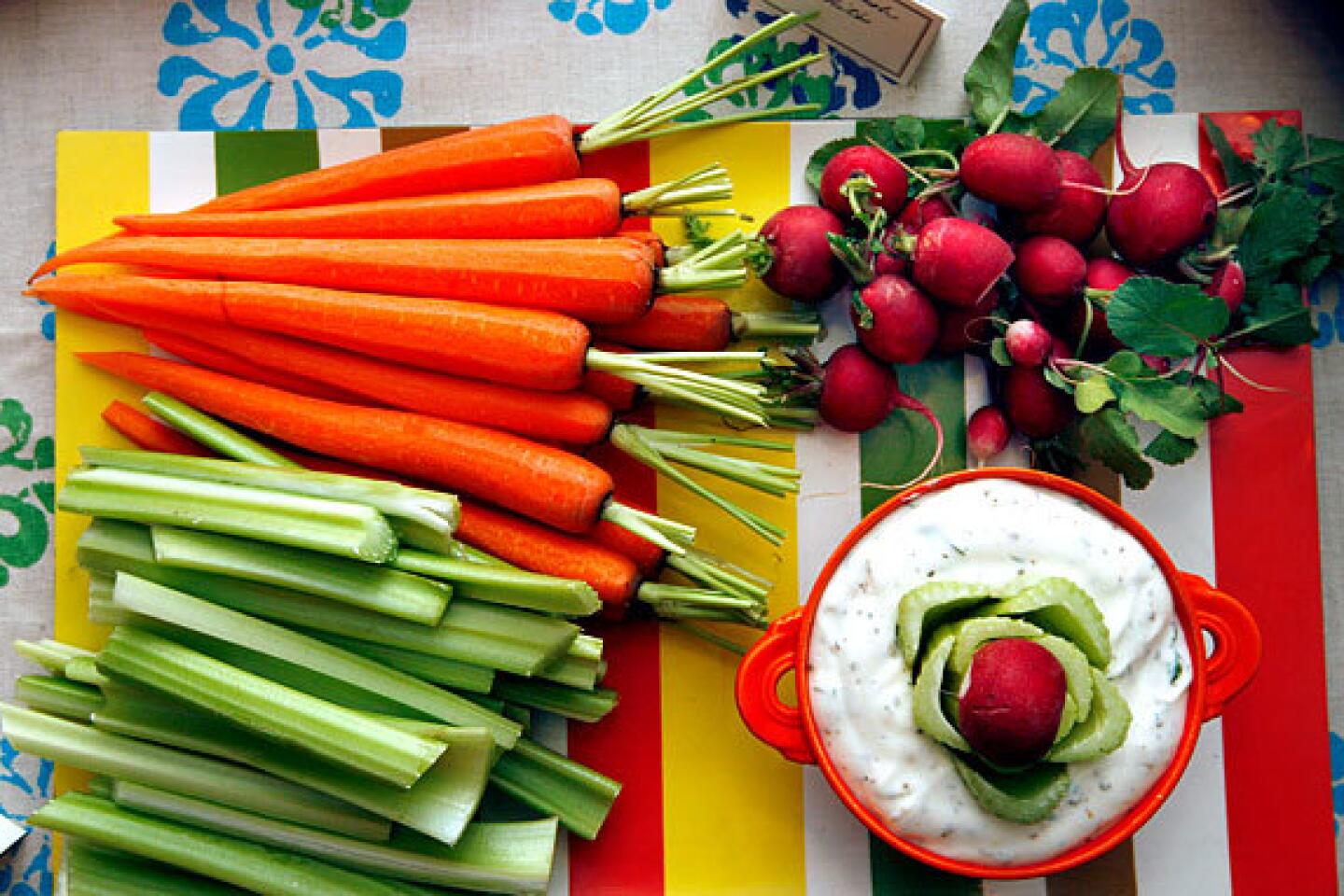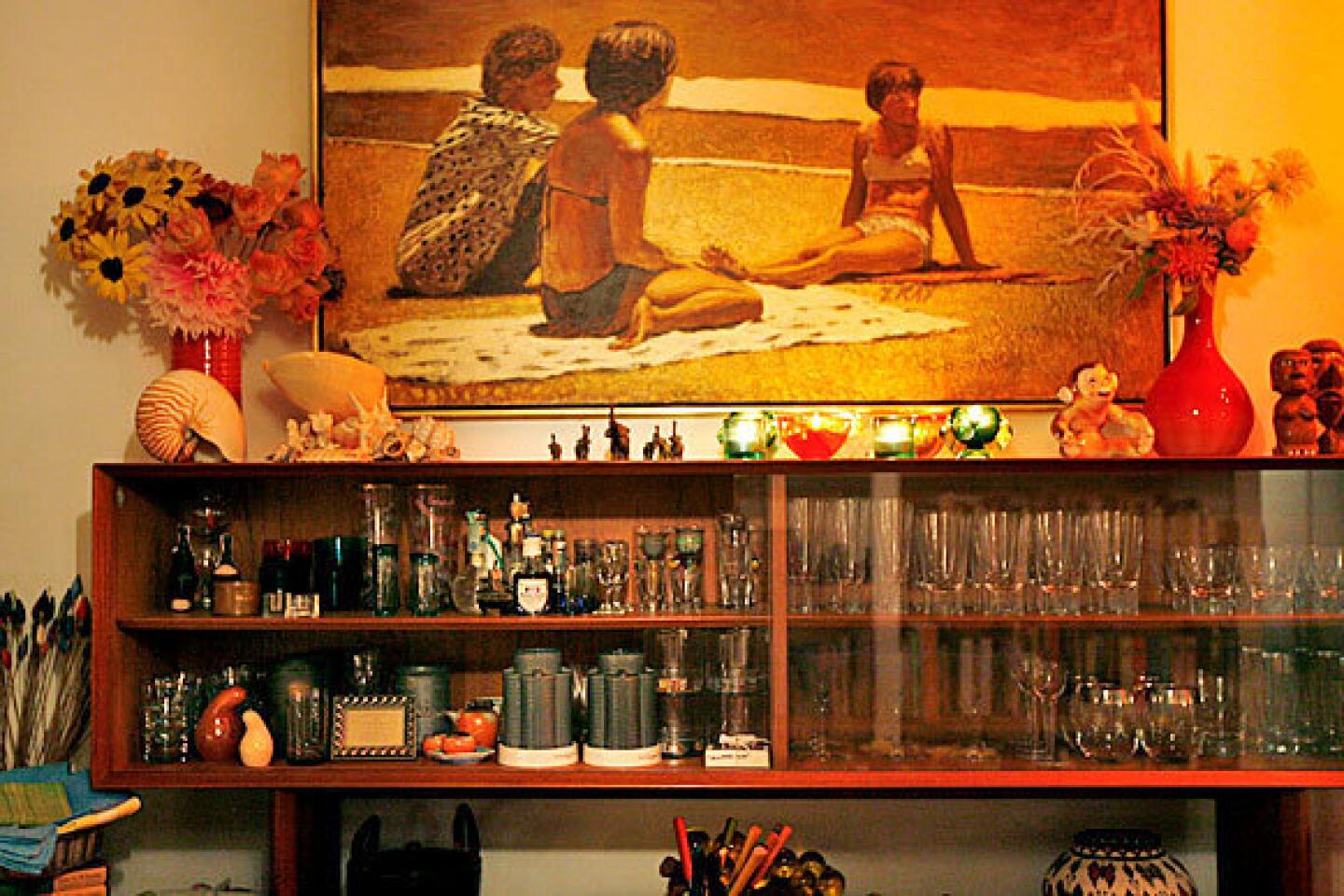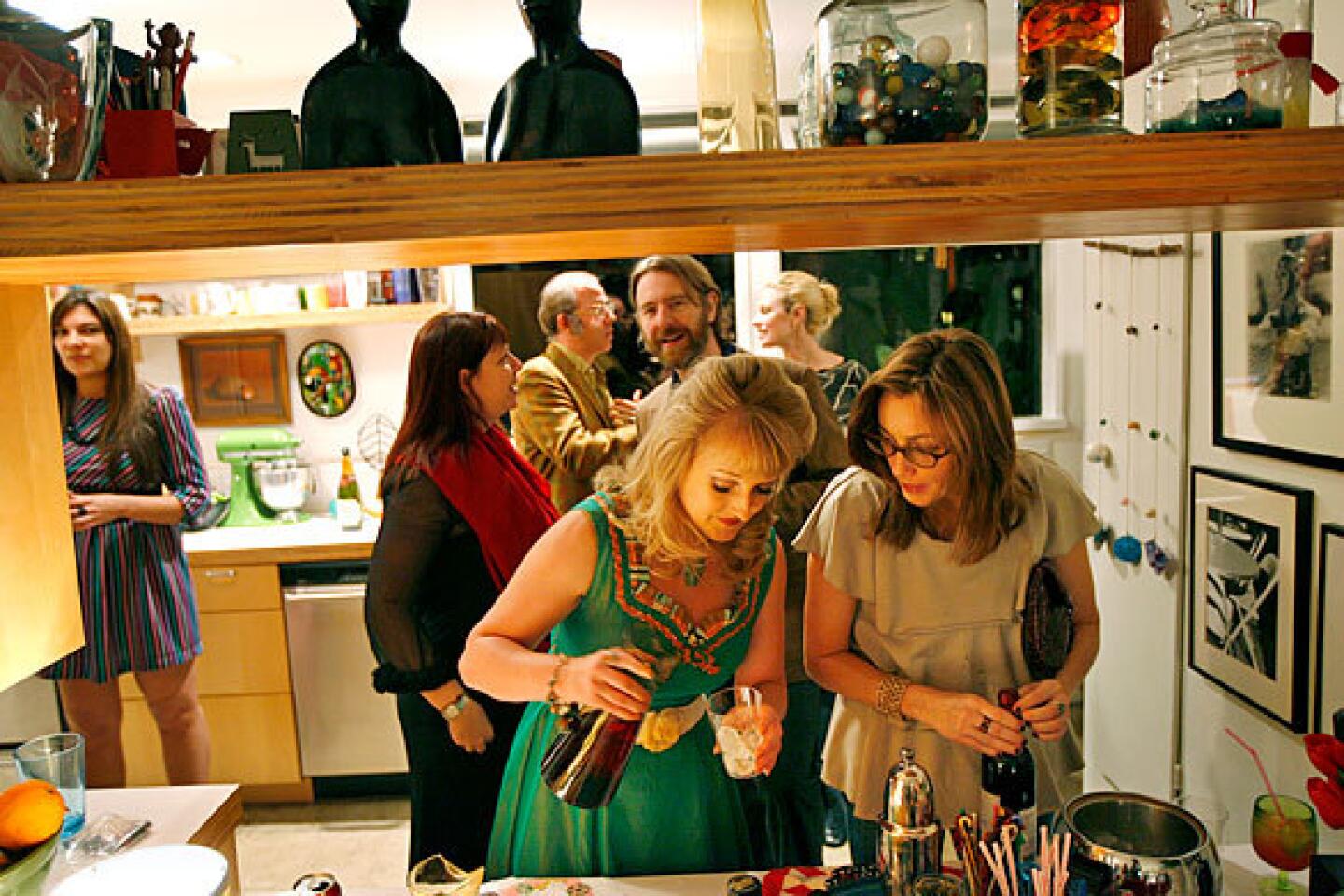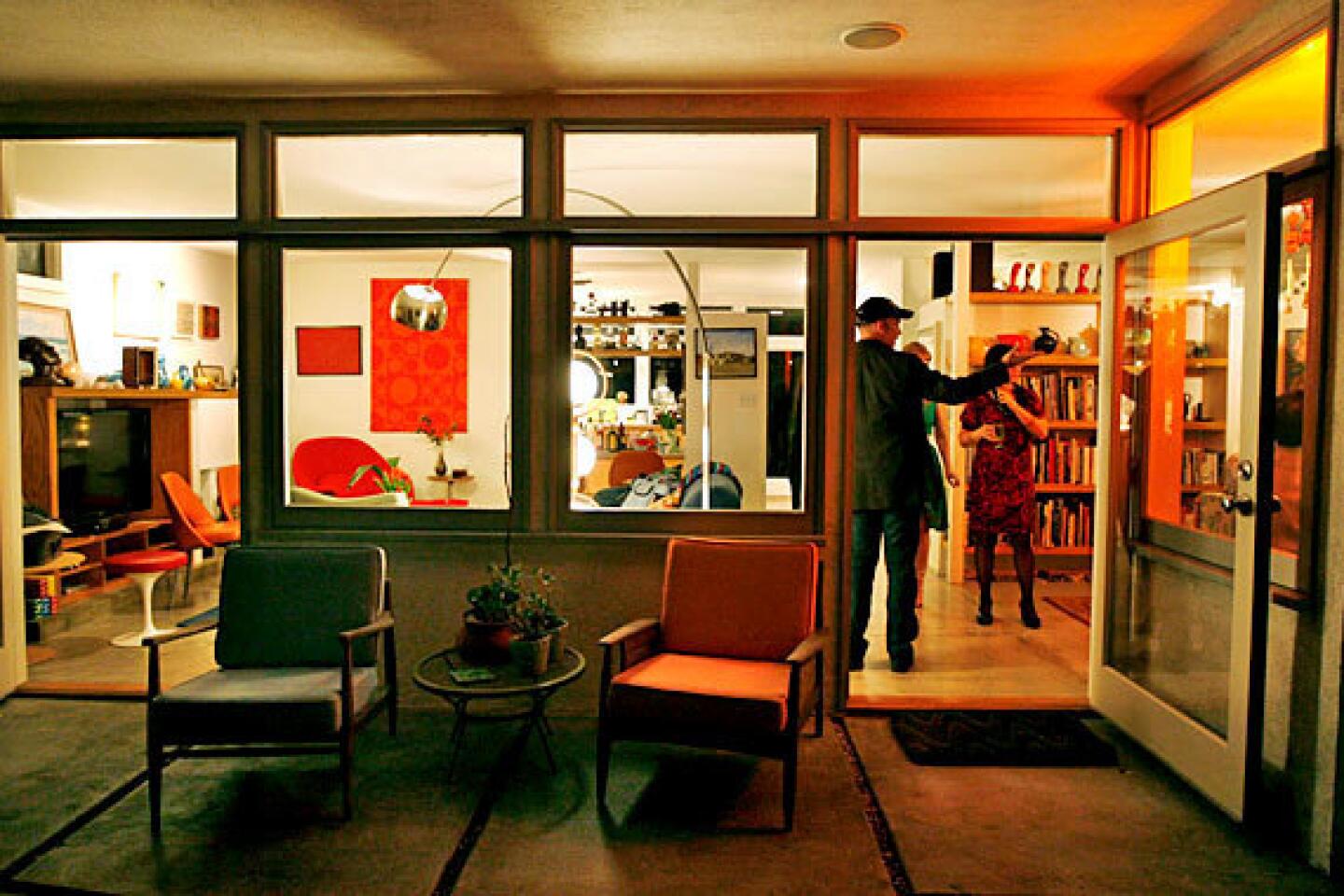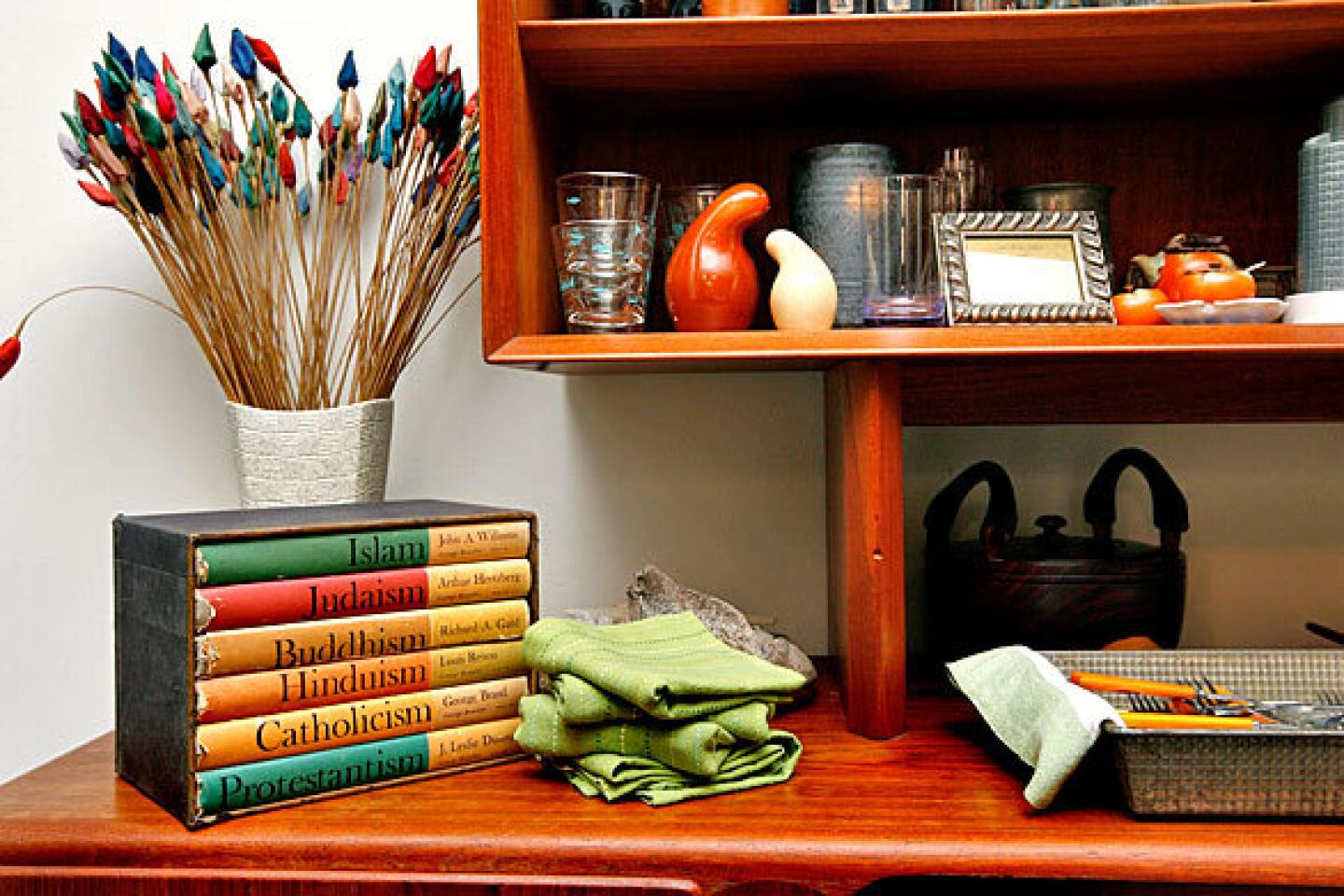Party in grand style, on a budget
As a self-described “nice Jewish girl,” Ruth Handel gets a little verdutzt when it comes to home entertaining: “I’m always asking myself, is there enough food? Is there enough to drink? Does the house look good enough?”
Enough already. These days Handel has learned a highly prized lesson: With a little imagination, it is possible to throw a bash that doesn’t knock the stuffing out of your wallet. A party can be thrifty and nifty.
Of course, it helps that she and her husband, Lloyd Scott, happen to live in a classic Southern California home. Even without a well-stocked bar and a dining table laden with finger food, design-obsessed friends would flock to the stylish 1948 residence -- part of the famed Mar Vista tract created by Modernist Gregory Ain. Voracious collectors of vintage furniture and accessories, Handel and Scott have done little to alter architecture and much to decorate it with period panache.
“When I come to visit, it sometimes seems like objects are mating, because there are more of them,” performance artist Johanna Went said at a recent gathering, for which she brought an $8.95 junk-store metal owl as a hostess gift. A grateful Handel placed it next to a nearly identical owl sculpture already perched on the hearth, below an impressive collection of 1960s Italian ceramics.
The space was an ideal setting for the evening’s get-together: two dozen creative types in their late 30s to early 50s gathering to have an early look at Stan Williams’ new thrift-shop decorating book, “The Find,” which documents Los Angeles and Palm Springs homes and one of Handel and Went’s joint garage sales.
“I have always been in awe of the house and the collections they have,” Williams said, sitting in one of the couple’s Eero Saarinen chairs underneath a classic Arco floor lamp. “To have a party in a house like this is incredible.”
The New York author, who also writes a design blog called the Elegant Thrifter, not only was guest of honor but also served as a more-than-honorary co-host, collaborating with Handel on the menu and décor for the event.
Job 1, Handel said, was clearing the space of her son’s toys. She proclaimed the house “party hearty” thanks to concrete floors that clean up in a jiff. The open kitchen, living and dining areas, she added, “create a comfortable loft feeling and make you feel as if you’re at the party no matter what room you are in. And the circular flow of the indoor and outdoor spaces guarantees that people will eventually cross paths.”
Although the Mar Vista tract is composed of only 52 houses like Handel and Scott’s, it looms large as an architectural enclave.
With the renewed interest in midcentury design, it has become a community of like-minded residents who appreciate the innovations of modern homes that, Scott noted, originally averaged about 1,000 square feet and were sold for $11,000.
Ain believed that houses should be designed so that Mom could be working in the kitchen and still watch the kids, Scott said, pointing out a breakfast table built into the cabinetry.
“He also believed in the social experiment of neighborhood planning and had an open landscape design by Garrett Eckbo,” Scott said. “But as soon as people moved in, they put up fences.”
::
These days, however, an open-door spirit pervades. Neighbors share a network of resources for restoration and maintenance, and when it came time for Handel’s party, some popped in to join the fun.
A jazzy cover of “Do You Know the Way to San Jose?” by the Bobby Timmons Trio set a tone of 1960s suburban sophistication. Not surprisingly, the cocktail conversation centered around the economy and its effect on entertaining.
“For this party we were looking at what would be fun, not caviar and Champagne,” said Handel, who pulled radishes from her garden for the crudités plate.
“We are drinking $5.49-a-bottle Prosecco tonight, and it’s really good,” Williams added. “In this economic time, you can be frugal but still fabulous.”
Toward that end, the author invented a dessert called Hint of Mint: chocolate cake covered in pale green butter-cream icing and decorated with York peppermint patties.
He also brought a friend’s grandmother’s baking pan in his luggage from New York to make a classic pineapple upside-down cake that he decorated with vintage (and still in their unopened package) butterfly-topped hairpins that Williams found scrounging yard sales with Handel the morning of the party.
“It’s all very retro,” said guest Charles Phoenix, who lectures on Southern California midcentury design. “Now we can really appreciate how you can do retro on a budget so easily. It’s a lot about presentation. They have the pineapple upside-down cake, the dip, the toothpicks with fancy cellophane tips and everything on the table looks vintage.”
Lighted by a Verner Panton Moon lamp, the chrome and Formica table was dressed like an illustration from one of the 1950s cookbooks that Handel collects -- the kind that were commonly given to purchasers of new appliances. This dining area, originally a bedroom, is now opened up into the living room and lined with double-thick plywood shelves holding art books and Scott’s stash of vintage ceramics.
Some guests stopped to browse through a volume or admire one of Handel’s garage sale artworks, a painting of beachgoers hung above a Danish modern sideboard. Others hovered in the kitchen, where a bar had been set up on the built-in breakfast table.
Vegetarian rice and beans and seafood stew from the Gumbo Pot at the L.A. Farmers Market simmered on the stove, with potholders nearby bearing the likeness of Handel and Scott -- a favor to guests at their 2002 wedding.
“I don’t understand why people get stressed about entertaining,” Williams said, raising a dessert knife to his pineapple-topped pastry. “If you can bake a cake, you’re all set, and even if the food is bad, if it looks pretty, it always tastes better.”
